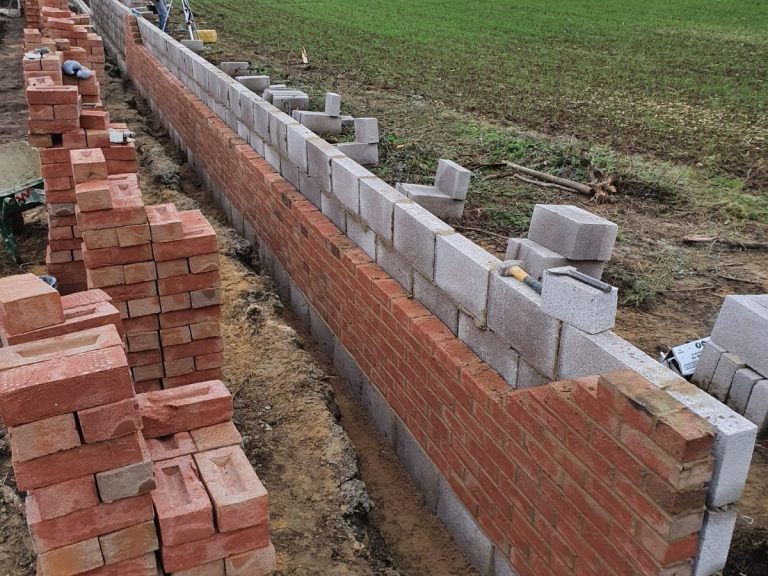
Brick Bonds and Mortar: The Craft of Building Through the Ages
By: Chris J Wilson
At Chris J Wilson Building and Landscape, we believe that building is more than just assembling materials — it’s a craft, a legacy, and an ongoing dialogue between old and new. Two essential components of that legacy are brick bonds and mortar. Whether we’re constructing a new garden wall or restoring a centuries-old cottage, the way bricks are laid — and what holds them together — plays a critical role in both strength and style.
In this article, we explore the different types of brick bonding patterns used in modern and heritage construction, as well as a historical overview of mortar types and their evolution over time.
Brick Bonds – Patterns That Combine Strength and Style
A brick bond refers to the pattern in which bricks are laid. This not only affects the wall’s structural integrity but also its appearance. In both modern and heritage work, choosing the correct bond is crucial for authenticity and performance
.
1. Stretcher Bond
Description: Bricks laid with only their long (stretcher) face visible, staggered in each course.
Uses: Modern cavity walls and partition walls.
Benefits: Quick to lay, cost-effective, ideal for non-load-bearing walls.
2. English Bond
Description: Alternating courses of stretchers and headers (brick ends).
Uses: Traditional load-bearing walls and historic buildings.
Benefits: Extremely strong and durable; seen in many Georgian and Victorian-era constructions.
3. Flemish Bond
Description: Each course alternates a stretcher and a header, creating a distinct checkered appearance.
Uses: Period homes, garden walls, heritage restorations.
Benefits: Aesthetic appeal with good strength; widely used in the 17th–19th centuries.
4. Header Bond
Description: Bricks laid with only the short end (header) showing.
Uses: Thick walls or curved brickwork, like wells or circular columns.
Benefits: Compact and strong; common in older, narrower constructions.
5. English Garden Wall Bond
Description: Three courses of stretchers to one course of headers.
Uses: Garden walls, decorative outdoor features.
Benefits: Economical, strong enough for low-rise walls, with a balanced look.
6. Flemish Garden Wall Bond
Description: Alternates three stretchers and one header in each course.
Uses: Heritage-style landscaping, boundary walls.
Benefits: Decorative pattern; found in some Edwardian garden architecture.
7. Stack Bond
Description: Bricks laid directly on top of each other in a grid with no staggering.
Uses: Non-load-bearing walls, decorative panels.
Benefits: Modern, minimal look — but not suitable for structural walls without reinforcement.
A Brief History of Mortar – The Material That Binds It All
Mortar is the glue that holds bricks together. Over the centuries, its composition has changed significantly — often with direct implications for building longevity and heritage preservation.
1. Lime Mortar (Ancient to 19th Century)
Composition: Lime, sand, and water.
Benefits: Breathable, flexible, self-healing to some extent.
Common In: Historic buildings, especially pre-20th century.
Note for Heritage Work: Still preferred in restoration, as it allows buildings to “breathe” and reduces cracking caused by movement.
2. Roman Mortar
Composition: Lime mixed with volcanic ash or brick dust (pozzolanic materials).
Benefits: Hydraulic set — cures under water or damp conditions.
Legacy: Responsible for the longevity of Roman aqueducts and masonry.
3. Natural Hydraulic Lime (NHL) Mortar
Composition: Lime with naturally occurring clay or minerals.
Benefits: Sets more quickly than pure lime, retains flexibility and breathability.
Use in Conservation: Widely used in listed building repairs and conservation areas.
4. Cement Mortar (20th Century Onwards)
Composition: Portland cement, sand, and water.
Benefits: Fast setting, strong, resistant to weathering.
Downside in Heritage Work: Too rigid for older buildings — can cause damage to bricks by trapping moisture.
5. Lime-Cement Blended Mortars
Modern Compromise: Blends of lime and cement offer a mix of flexibility and strength.
Used In: Contemporary projects where some breathability is still desirable.
Choosing the Right Mortar for Heritage and Modern Builds
At Chris J Wilson Building and Landscape, we match the mortar to the age and style of the building. For heritage work, we use lime-based mortars to maintain authenticity and building health. For modern builds, we often opt for cement or lime-cement blends for performance and longevity.
Why mortar choice matters:
Historic buildings: Need breathable mortars to prevent trapped moisture, which can lead to decay.
New construction: Benefits from fast-setting, weather-resistant mortars that provide structural rigidity.
Craftsmanship That Respects the Past and Builds the Future
Brick bonding and mortar composition are more than technical choices — they’re statements of quality and care. At Chris J Wilson Building and Landscape, we blend time-honoured techniques with modern standards, ensuring every wall we build — or restore — is as functional as it is beautiful.
Whether you're building something new or restoring a part of history, we’re here to help you make informed, lasting choices.
Get in Touch
Looking for expert brickwork or advice on mortar selection for your project?
Contact Chris J Wilson Building and Landscape for professional guidance, tailored solutions, and a passion for craftsmanship that stands the test of time.